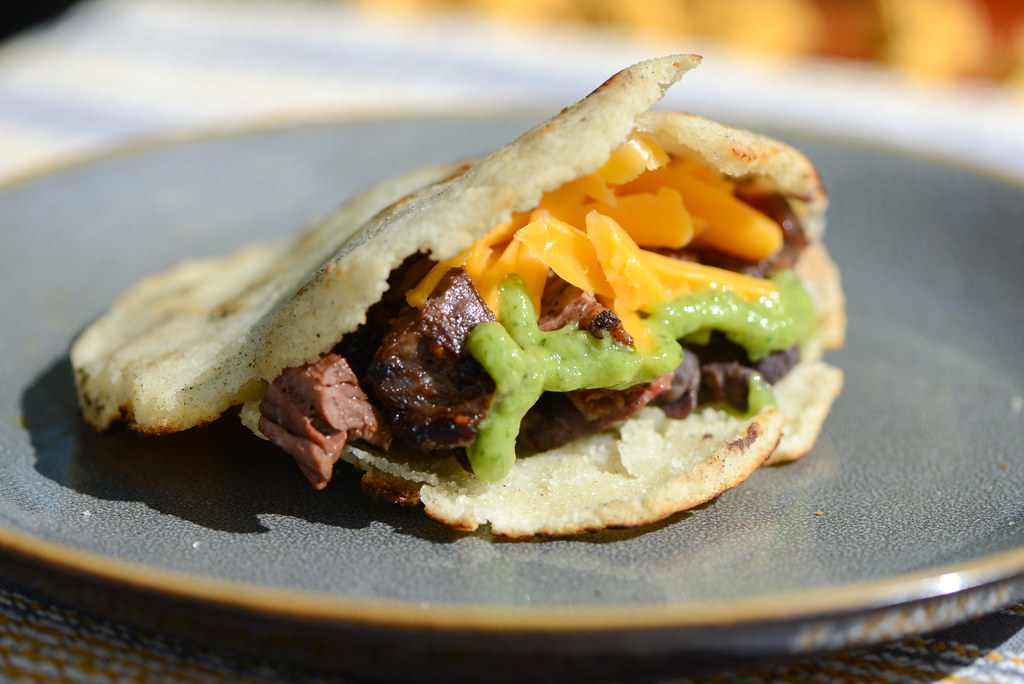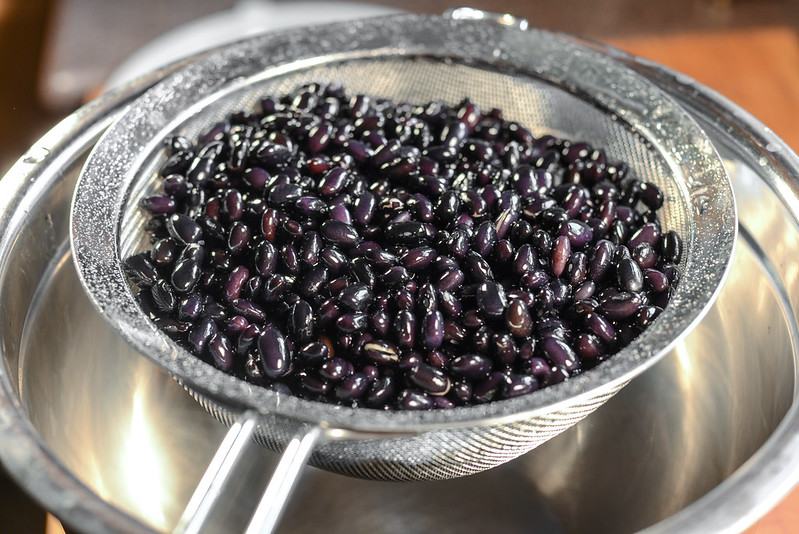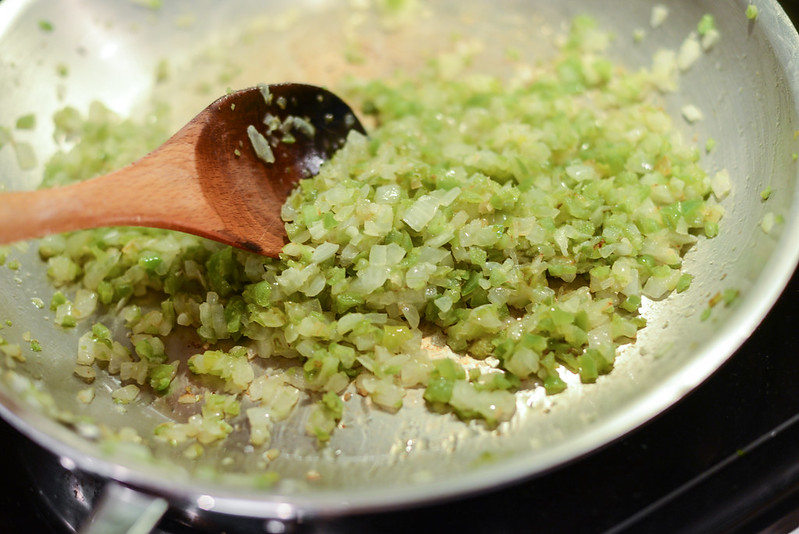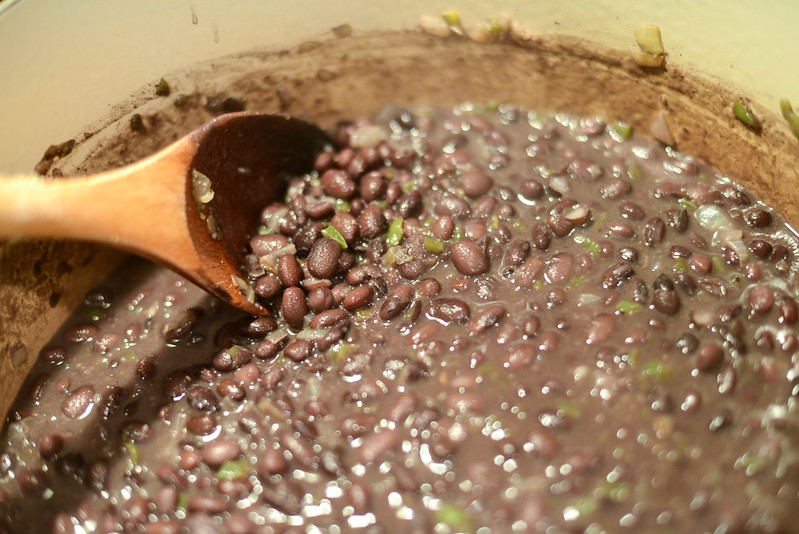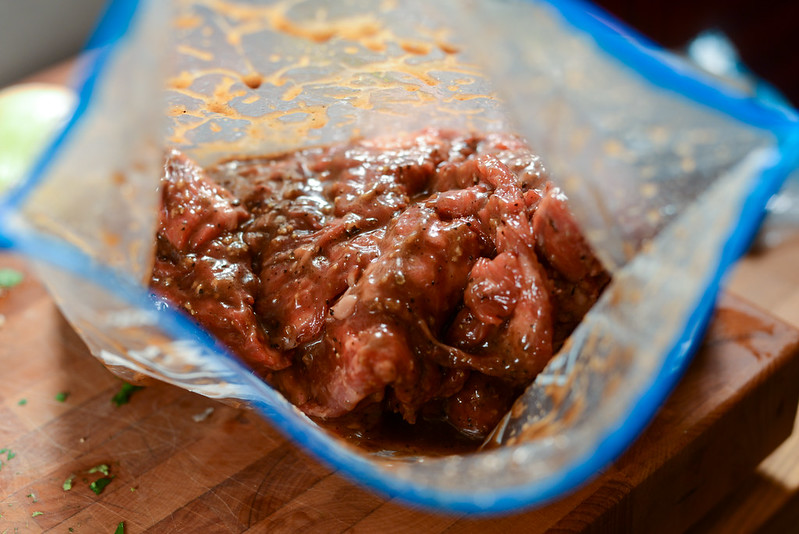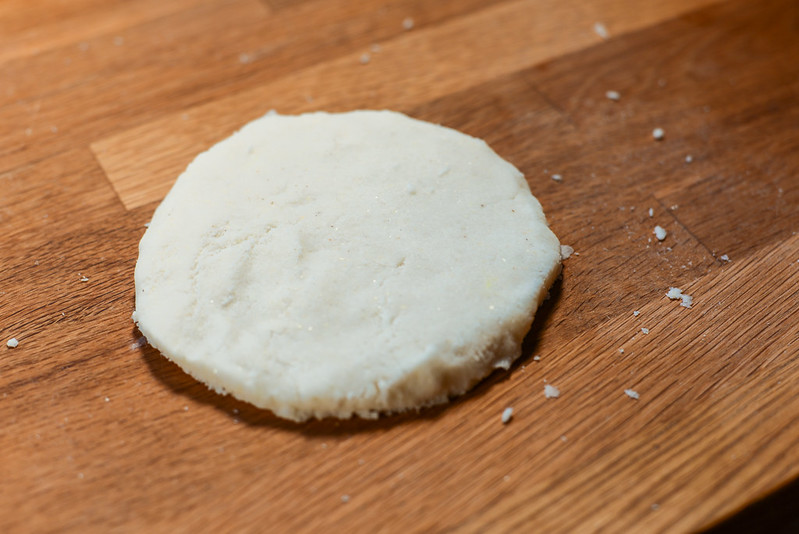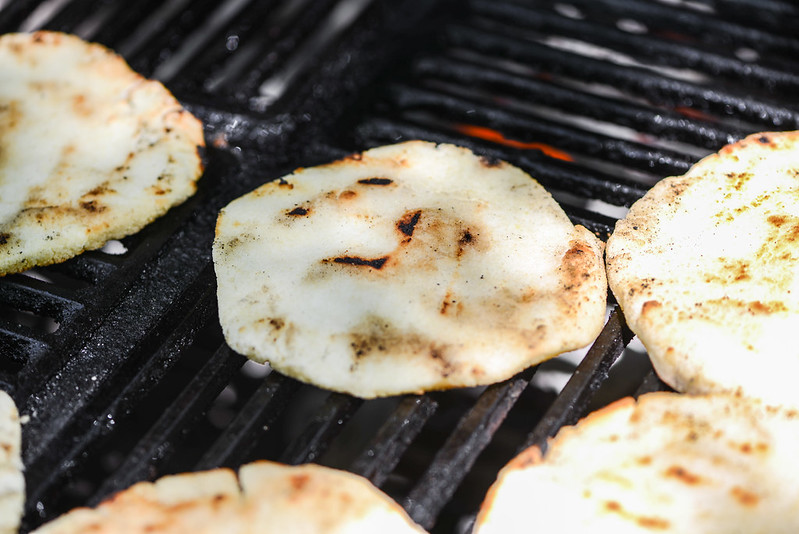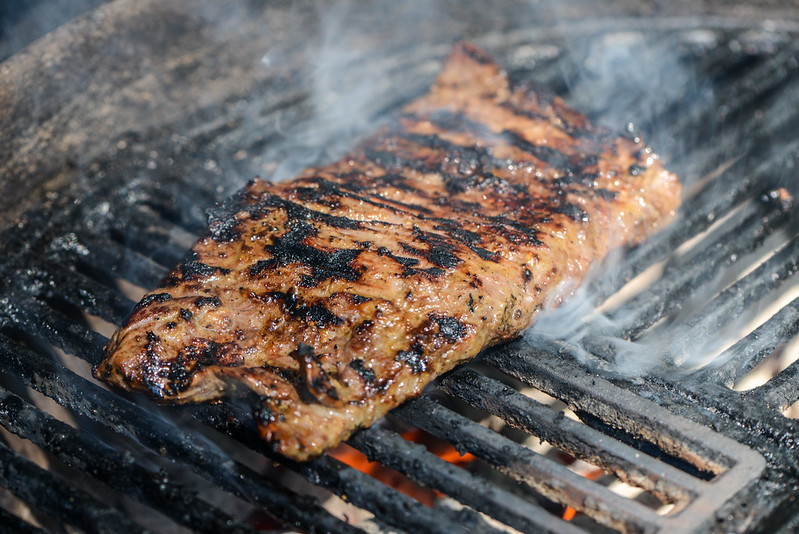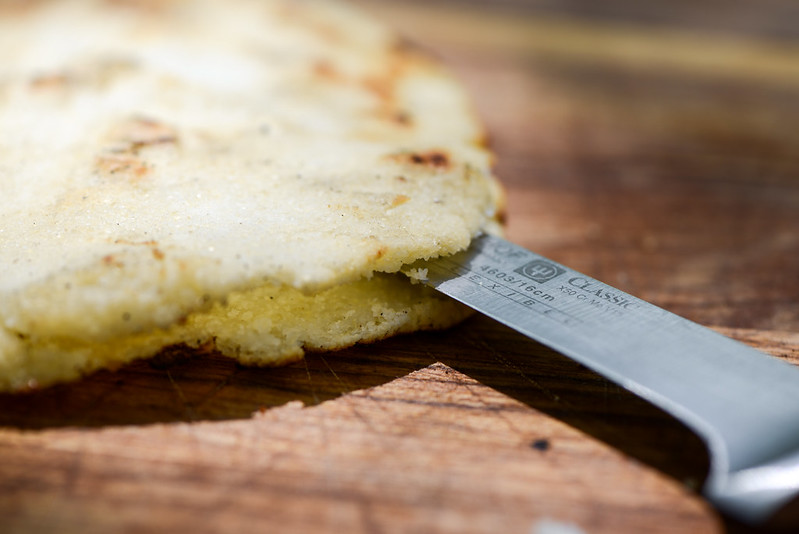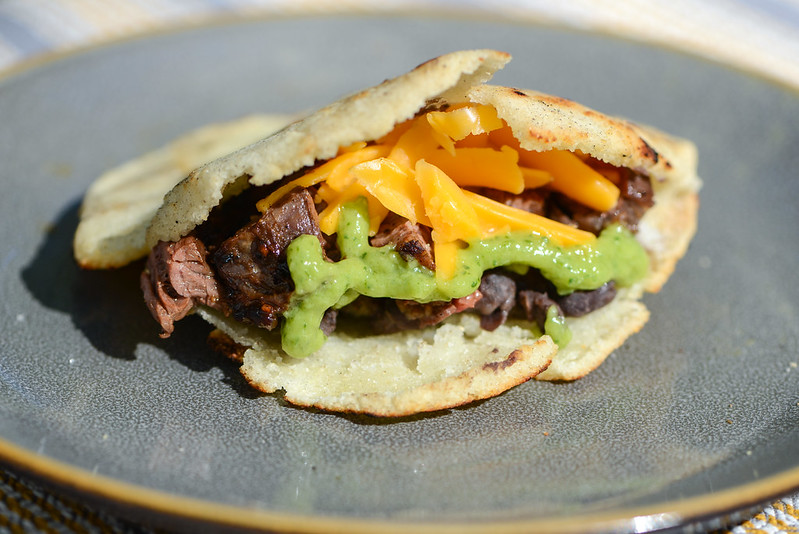Arepas with Skirt Steak, Black Beans, and Cheese
Back in my old hood of Astoria, NY, we had an amazing arepas joint called Arepas Cafe. I was instantly enamored with my first taste of these Venezuelan stuffed corn cakes, and while I tested the waters early on of all different types of fillings, I found my three favorites and have stuck to ordering only those year after year. So when I was making arepas at home a few years back, two of my beloved varieties—the Reina and Guyanesa Tropical—were on the menu, but I also tossed one new variation into the mix with this arepa filled with black beans, grilled skirt steak, and cheddar cheese.
This recipe started out with the production of the black beans. I decided to make them from scratch, which really isn't much more difficult than beginning with canned beans as long as you plan far enough in advance. They did require prepping the night before, but that was just emptying a bag of dried black into a large bowl and then submerging them in water. The next day I drained the soaked beans and then simmered them in water until they were just tender, which took about one and half hours.
I then sautéed all the seasonings—which comprised of onion, ajices dulces, green bell pepper, garlic, and cumin—and added them into the pot with the beans and simmered an additional 30 minutes to allow all the flavors to meld together.
With a final seasoning of salt and pepper, my monster pot of black beans was done. Yes, this was way, way more beans than needed for actually making the arepas, but I also served them as an accompaniment and they were great with rice for a quick side dish during the week. You can certainly halve the recipe for the beans if you like, but they're definitely versatile and I think having more than needed on hand isn't a bad thing.
These arepas represent the third recipe this steak has been featured in—previously you could find it used in tostones with skirt steak and also a steak pepito. I created a very savory marinade to go with already flavorful skirt steak that went in heavy with the Worcestershire and added just some minimal supporting ingredients by way of brown sugar, garlic, and cumin. I then married the steak and sauce and let the two mingle together overnight in the fridge.
I only took up arepa making after leaving New York and having longings for the exact arepas I had grown to love there, but couldn't get in North Carolina (although we do have quite a few great local arepa options here). I was surprised to learn how easy they are to make—I just had to pick up a bag of masarepa at my local grocery and mix it with an equal amount of water and a little bit of vegetable oil. After allowing the water to fully hydrate the masarepa for about five minutes, the resulting dough could be portioned out and flattened into the required flat disc shape.
I've cooked my arepas both in a cast iron pan and the grill, and while I have a preference for how the crust develops in the cast iron, the grill was the tastier of the two cooking methods. To grill the arepas, I brushed the raw dough with butter and then cooked them over direct heat until the exterior was dry and crusty. I then moved them over indirect heat, covered, and let them roast for another ten minutes until the dough was cooked all the way through.
After removing the cooked arepas, I grilled the steak over the still blazing hot fire. For skirt steak, the hotter the fire, the better. This fibrous cut of beef is best with a very well seared exterior, but still has rosy red medium-rare interior, and a hot cooking method is what allows you achieve that perfect balance.
Even when cooked to perfection, all will be for naught if skirt steak is not sliced against the grain—the longer the grains of meat, the more unpleasantly chewy the steak will be. Good news for this arepa preparation though, I decided to cut the steak into a small dice, so that would ensure every piece would as tender as possible, whether I paid attention to then grain of the meat when slicing or not.
Once I had the steak done and sliced, I cut pockets into each arepa. I'm still a bit of novice here and too often don't get my knife right in the center and end up puncturing the exterior in non-desirable areas. I noticed when I was at a local arepa shop last week that they were cutting their arepa pockets with a plastic knife and wondered if that might be the answer to avoiding unwanted holes—the much duller knife could be a lot hard to push through the tougher crust, keeping the blade safely inside the arepa.
Into the cut pocket I stuffed in a layer of beans, followed by a generous portion of skirt steak, and then topped with grated cheddar and a squirt of guasacaca—a Venezuelan avocado-based salsa. I'm not going to lie and say this arepa is going to replace the few I've developed n deeply ingrained love for over the years, but it did leave me thinking that I really should branch out every now and again. I'm a skirt steak fiend, and with the enhanced savory and earthy qualities from the marinade, it make for a powerhouse base of a filling. The beefy and tender centerpiece was added to by the the creamy black beans and the mellow sharpness of the cheddar. The guasacaca is what really brought in a touch of freshness, and for my own personal taste, I ended up adding in some Matouk's West Indian Hot Sauce, which added an addictive fruity heat that has become synonymous for me with arepas because a bottle of it is on every table at Arepas Cafe. This arepa certainly wasn't lacking anything, and I'm sure if you don't have such an emotional connection to a few specific accompaniment varieties like I do, it would be a contender for best in show.
